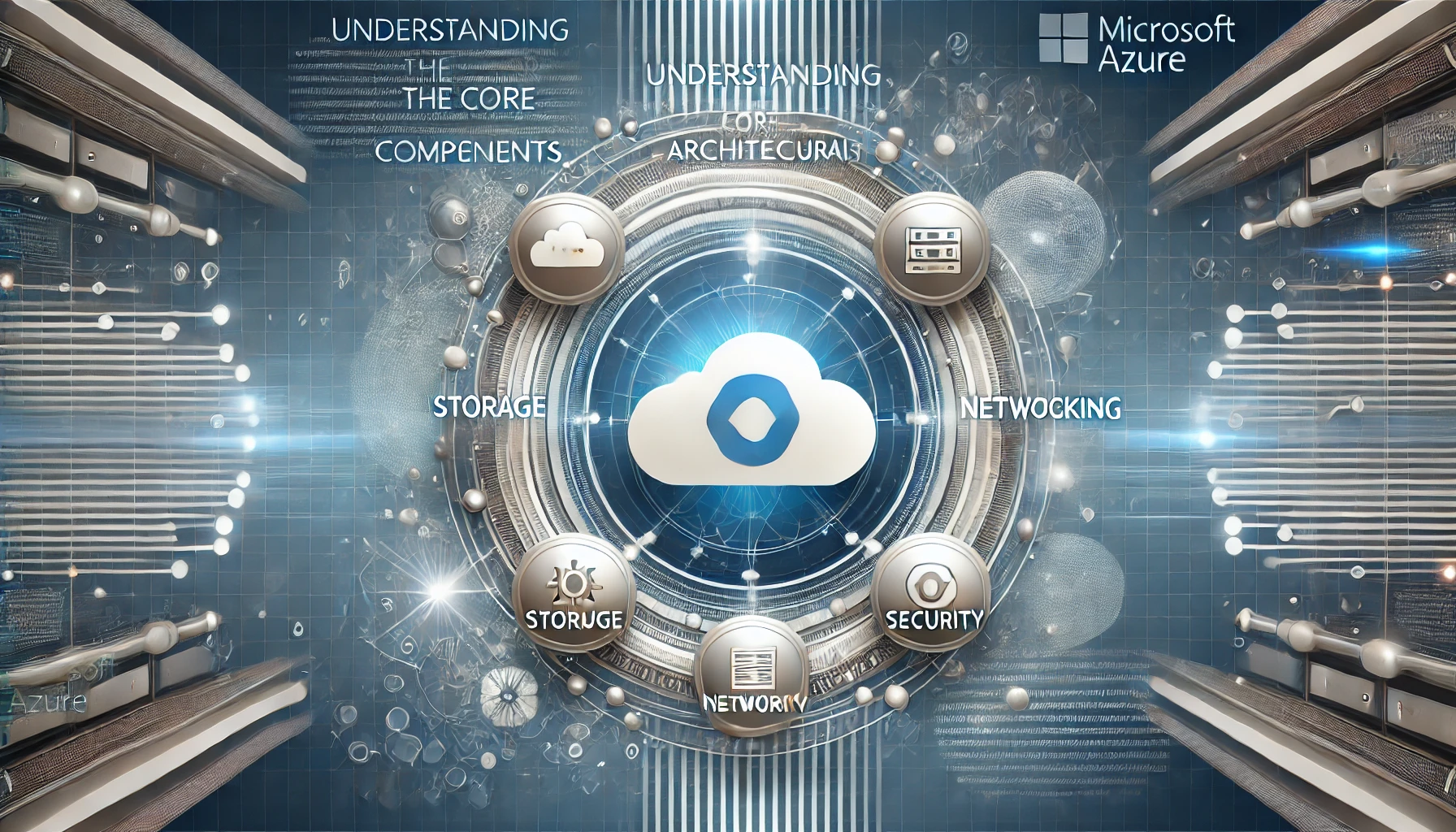Understanding the Core Architectural Components of Microsoft Azure
 Silias Odion
Silias OdionTable of contents
- Core Architectural Components of Azure
- 1. Azure Regions
- 2. Azure Resource Groups
- 3. Azure Resource Manager (ARM)
- 4. Azure Compute Services
- 5. Azure Networking
- 6. Azure Storage
- 7. Azure Identity and Access Management
- 8. Azure Monitoring and Management Tools
- 9. Azure Databases
- 10. Azure AI and Machine Learning
- 11. Azure Security
- 12. Azure DevOps
- Conclusion

Microsoft Azure is one of the leading cloud computing platforms, providing a wide range of services to help businesses and developers build, deploy, and manage applications. To fully utilize Azure, it’s essential to understand its core architectural components. These components form the foundation of Azure's cloud environment, ensuring scalability, reliability, and flexibility.
In this blog, we’ll dive deep into the essential building blocks of Azure’s architecture, exploring how they work together to deliver seamless cloud services.
Core Architectural Components of Azure
1. Azure Regions
Azure operates data centers worldwide, grouped into regions to provide localized and reliable cloud services.
Definition: A region is a geographical area that contains one or more Azure data centers.
Purpose: Regions allow users to deploy resources close to their target audience to minimize latency and meet data residency requirements.
Examples: Azure regions include East US, West Europe, and Southeast Asia.
Paired Regions: Every Azure region is paired with another to ensure business continuity. For example, East US is paired with West US for disaster recovery and data redundancy.
2. Azure Resource Groups
Resource groups are logical containers used to organize Azure resources.
Definition: A resource group is a container for related resources that share the same lifecycle and permissions.
Purpose: They simplify management by grouping related resources, making it easier to monitor, deploy, and delete them as a unit.
Key Features:
Role-Based Access Control (RBAC): Set permissions at the resource group level.
Tagging: Add metadata to resources for easy categorization.
3. Azure Resource Manager (ARM)
Azure Resource Manager is the backbone of Azure's resource deployment and management.
Definition: ARM is a management layer that allows users to create, update, and delete Azure resources.
Key Benefits:
Consistent Management: Use templates, APIs, and tools for consistent resource deployment.
Dependency Mapping: Define dependencies between resources to ensure proper deployment order.
Role-Based Access Control (RBAC): Securely manage who can perform actions on specific resources.
4. Azure Compute Services
Azure provides scalable compute options to run applications and services.
Components:
Virtual Machines (VMs): Fully customizable virtual servers for hosting applications.
Azure Kubernetes Service (AKS): Managed Kubernetes for containerized applications.
App Services: PaaS for hosting web apps, RESTful APIs, and mobile backends.
Azure Functions: Serverless compute for event-driven tasks.
Scalability: Automatically scale compute resources to handle increased workloads.
5. Azure Networking
Azure's networking services connect and secure resources globally.
Key Components:
Virtual Network (VNet): Enables secure communication between Azure resources.
Azure Load Balancer: Distributes incoming network traffic for high availability.
Azure Traffic Manager: Routes user traffic to optimal endpoints based on routing rules.
ExpressRoute: Provides private connections between on-premises infrastructure and Azure.
Azure Firewall: Offers network security to protect resources from threats.
6. Azure Storage
Azure provides scalable, secure, and redundant storage solutions for various data needs.
Types of Storage:
Blob Storage: Unstructured data storage for documents, images, videos, etc.
File Storage: Managed file shares accessible via SMB protocol.
Queue Storage: Messaging services for communication between application components.
Table Storage: NoSQL data store for structured data.
Redundancy Options:
Locally Redundant Storage (LRS)
Geo-Redundant Storage (GRS)
Zone-Redundant Storage (ZRS)
7. Azure Identity and Access Management
Azure provides robust tools to secure access to resources.
Azure Active Directory (Azure AD):
Cloud-based identity and access management service.
Enables single sign-on (SSO) and multi-factor authentication (MFA).
Role-Based Access Control (RBAC):
- Granular permissions management for resources.
Azure Key Vault:
- Securely stores secrets, certificates, and encryption keys.
8. Azure Monitoring and Management Tools
Azure offers tools to monitor and manage resources effectively.
Azure Monitor:
- Collects metrics and logs to provide insights into resource performance.
Azure Advisor:
- Personalized recommendations to improve resource performance and cost efficiency.
Azure Service Health:
- Provides alerts and updates about service issues or outages.
Azure Automation:
- Automates repetitive tasks like patch management and configuration updates.
9. Azure Databases
Azure supports a variety of database solutions for diverse application needs.
SQL Database: Fully managed relational database.
Cosmos DB: Globally distributed, multi-model NoSQL database.
Azure Database for MySQL/PostgreSQL: Managed open-source database solutions.
Azure Synapse Analytics: Integrates big data and data warehousing for advanced analytics.
10. Azure AI and Machine Learning
Azure simplifies the development of AI and ML models.
Azure Cognitive Services: Pre-built APIs for vision, speech, language, and decision-making.
Azure Machine Learning: End-to-end service for building, training, and deploying machine learning models.
11. Azure Security
Azure incorporates security at every layer of its architecture.
Azure Security Center:
- Unified security management and threat protection.
Azure Sentinel:
- Cloud-native SIEM for intelligent threat detection and response.
DDoS Protection:
- Protects applications from distributed denial-of-service attacks.
12. Azure DevOps
Azure DevOps provides development tools to streamline CI/CD processes.
Key Features:
Repositories for version control.
Pipelines for continuous integration and deployment.
Boards for agile project management.
Artifacts for package management.
Conclusion
Microsoft Azure’s core architectural components offer a robust and flexible foundation for businesses of all sizes. By understanding these components, organizations can effectively design, deploy, and manage cloud-based solutions to meet their needs. Whether it's compute power, storage, networking, or AI capabilities, Azure provides the tools to innovate and scale in a secure and cost-effective way.
Understanding these building blocks not only empowers businesses to maximize Azure’s potential but also prepares them for the future of cloud computing.
Subscribe to my newsletter
Read articles from Silias Odion directly inside your inbox. Subscribe to the newsletter, and don't miss out.
Written by
